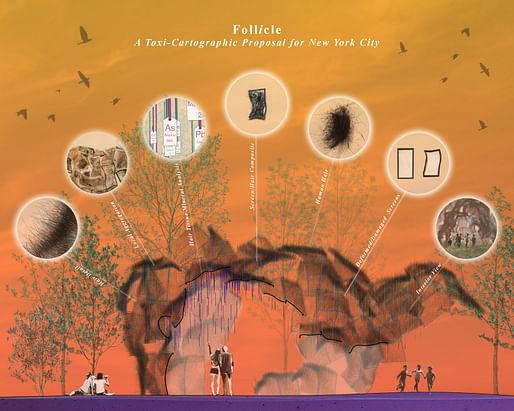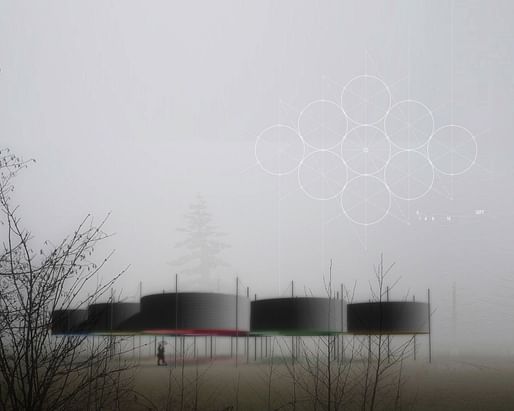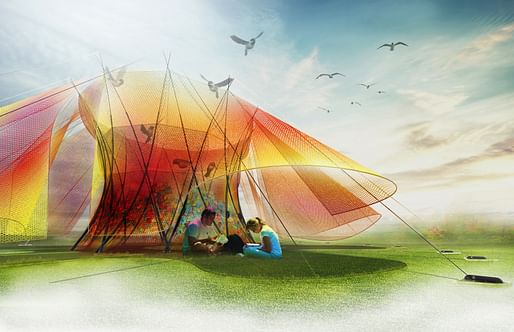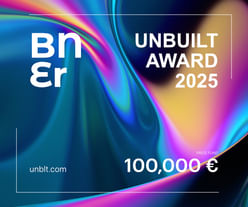

The competition for the 2018 City of Dreams Pavilion has narrowed down to five finalists. Every year, FIGMENT, the AIANY Emerging New York Architects Committee, and the Structural Engineers Association of New York (SEAoNY) challenges architects and designers to propose their most innovative and sustainably designed outdoor pavilion for the summer on Governors Island in New York. Entrants must focus on the environmental impact of their design, from material sources to disposal (ideally reuse). Last year, Aesop Studio's Cast & Place won the commission.
The finalist teams have already refined their proposals in response to jury comments. The jury will then reconvene to review the revised designs and are expected to pick the winner by the end of this month. The winning pavilion will be installed on Governors Island in time for the summer season, from June through late August.
Check out the five finalist proposals below!
“Follicle: A Toxi‐Cartographic Proposal for New York City” by Deborah Lopez, Hadin Charbel, Mika Portguaise, Francisco Prada López, and Anders Rod

Project description: “Follicle is a collective being with multiple personalities gathered from across Manhattan—an aggregation of deformed screen doors clad in human hair that are examined through Hair Tissue Mineral Analysis (HTMA), revealing different levels of toxic, nutritional, and mineral content in the human body. The results are rendered visible in the space through color‐coded strings suspended from the interior, which can be read by visitors as an inverted toxi-cartographic map of the city. Tags hanging at the end of each string carry information about the mineral in question, as well as a QR code that directs users to an interactive website where they can restructure the information based on different parameters. By manifesting itself through hair and revealing its mineral content, Follicle expresses architecture and urban ecology as much as it empowers citizens through information.”
“Mossgrove” by Sam Biroscak in collaboration with Gina Dyches, Stephanie Borchers, Annick Lang, and Anneli Rice

“Architectural responses to sustainability often revolve around boundary‐pushing technology or adaptive algorithms. By giving form to the formless, Mossgrove highlights the biological intelligence of moss, an ancient ecological workhorse that holds immense potential as an architectural response to climate change. Through the strategic placement of reusable scaffolding posts, Mossgrove creates two clearings beneath a wood lattice. Moss‐treated biodegradable burlap is hung from the lattice to create a collage of various species, colors, and textures. By varying the size, depth, and density of the moss, the clearings can be tuned to be more or less porous to the park, allowing greater focus on programs within or connectivity to the park beyond.”
“Oculi” by Austin+Mergold

“The landscape of the rural Northeastern US is dotted with metal grain bins. A product of the industrial age, when faith in technology‐driven progress outstripped our considerations of what came after, the grain bin now exists as an artefact, underused and nearly abandoned. We have now entered the moment of the “after.” Oculi reuses this vestige of the agro‐industrial age in ways akin to those of the mediaeval inhabitants of Rome who reconsidered the remains of the Ancient Empire – with a bizarre combination of pragmatism and poetry. The grain bin is our contemporary spolia and can be both useful and fanciful. A de/reconstructed version of a grain bin is a field of elevated oculi that register the path of the sun, producing a range of shadow patterns below, augmented by pattern, color, and sound. Following the de‐installation of Oculi, the bins will be reconstructed as an experimental housing cluster in Central New York, a House‐in‐a‐Can.”
“The Rainbow Pavilion” by Christophe Cormy Donat

“The Rainbow Pavilion is constructed entirely from sustainable materials and repurposed plastic bags, woven into brightly colored, intricate “clouds”. The form and detail of the building will naturally intrigue viewers, enticing them to take a closer look. Upon inspection, visitors will see the familiar logos and brands of their favorite supermarkets and clothing stores woven into the fabric of the building. The kaleidoscopic installation will intrigue, educate, and engage visitors, inspiring them to rethink their habits and redesign their lives.”
“Color Waves Pavilion” by Shujie Chen, Xiao Tong, Ning Wang, Yifeng Wang, Yifeng Wu, Bowen Zhang, Matthew Streeter, Jingwen Wang, and Sam Wilson

“Abandoned and discarded fishing gear makes up about 10 percent of trash collected in the world’s oceans, creating a major threat to the well‐being of sea life. Color Waves Pavilion imagines a gathering space enclosed and sheltered by recycled fishing nets and fishing rods. The design combines the structural advantages of the two materials to create a light, interactive, and playful pavilion structure. Layered fishnets of various colors reflect the sunlight and cast ever‐changing shadows on the visitors. The form of the pavilion morphs with the wind and can be adjusted by tightening the fishing lines on the fishing rods. After the season, the building components can be reused for recreational fishing and interior decoration.”

MICROHOME Kingspan 2024/25
Register by Thu, Dec 5, 2024
Submit by Tue, Mar 18, 2025

The Buildner UNBUILT Award 2025 / 100,000€ Prize
Register by Thu, Mar 6, 2025
Submit by Thu, Nov 20, 2025

2025 Lyceum Fellowship - A Community for the Future of Food
Register/Submit by Thu, May 22, 2025

Denver Single-Stair Housing Challenge
Register by Thu, Dec 12, 2024
Submit by Thu, Jan 23, 2025
No Comments